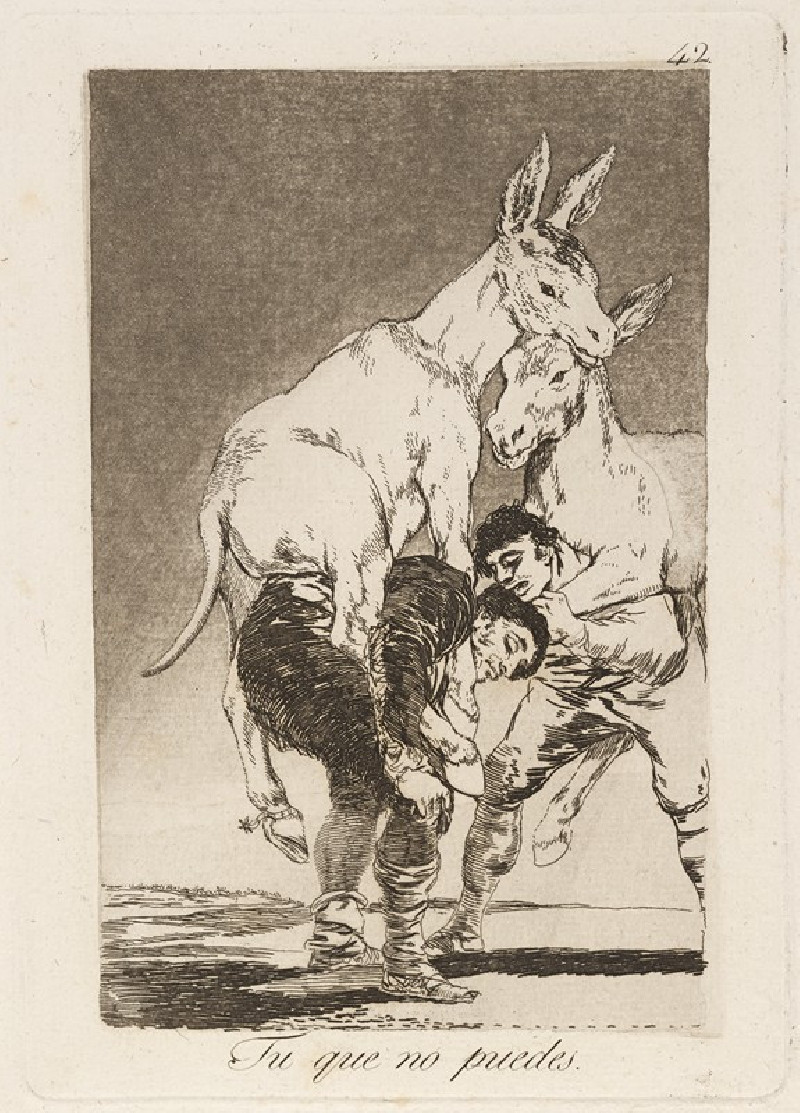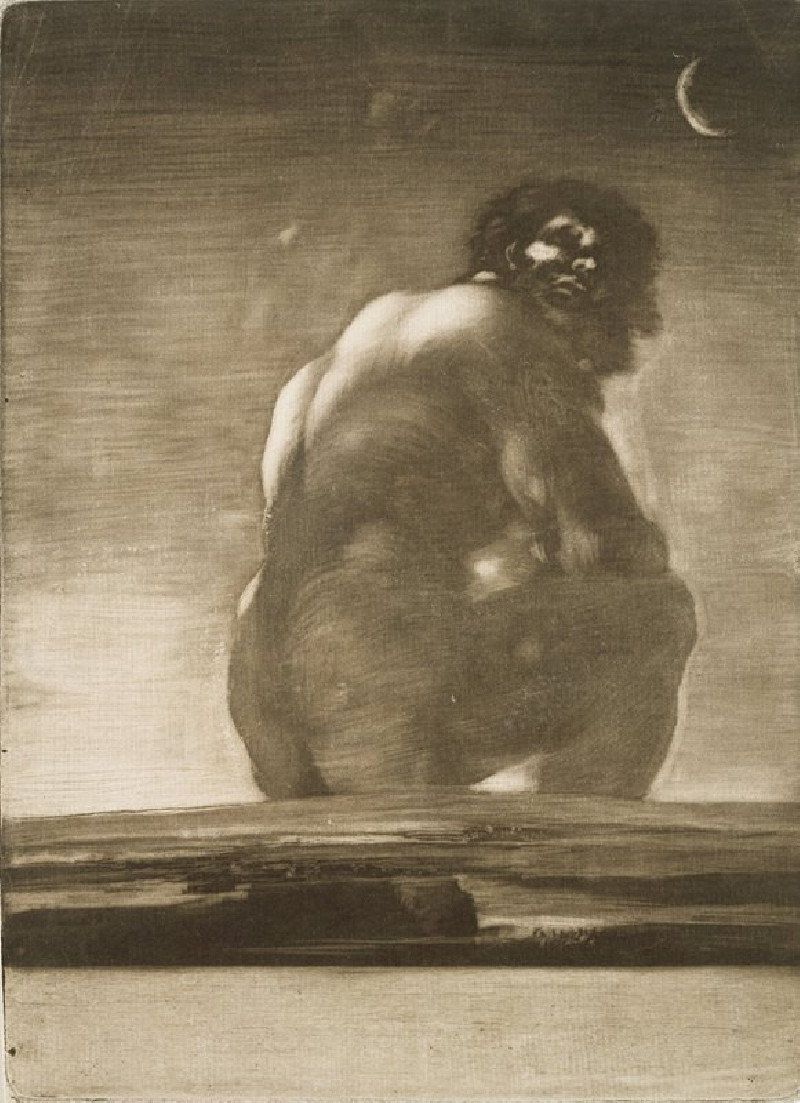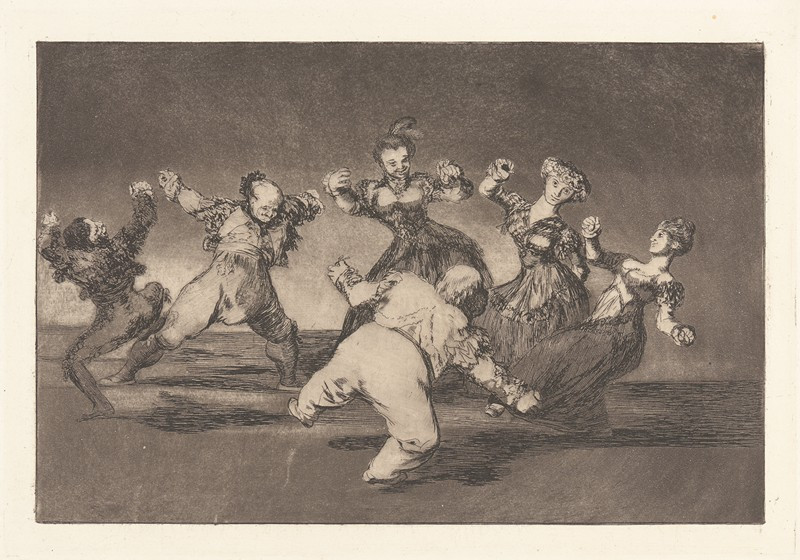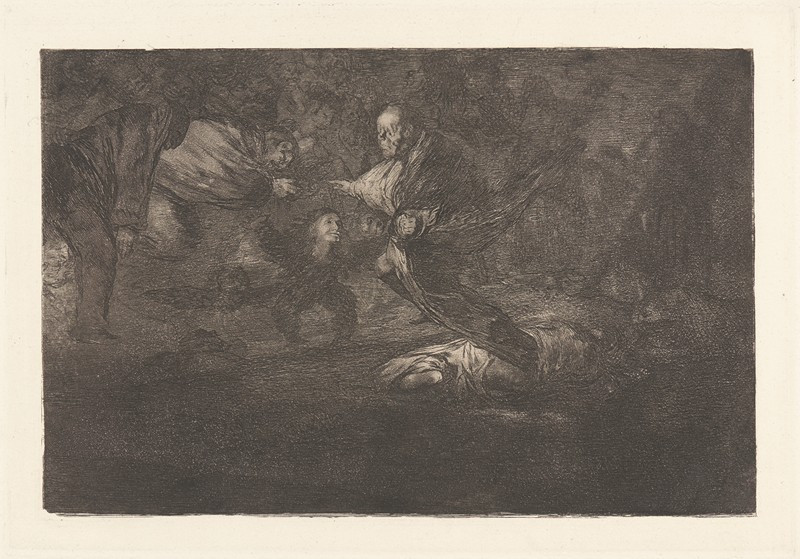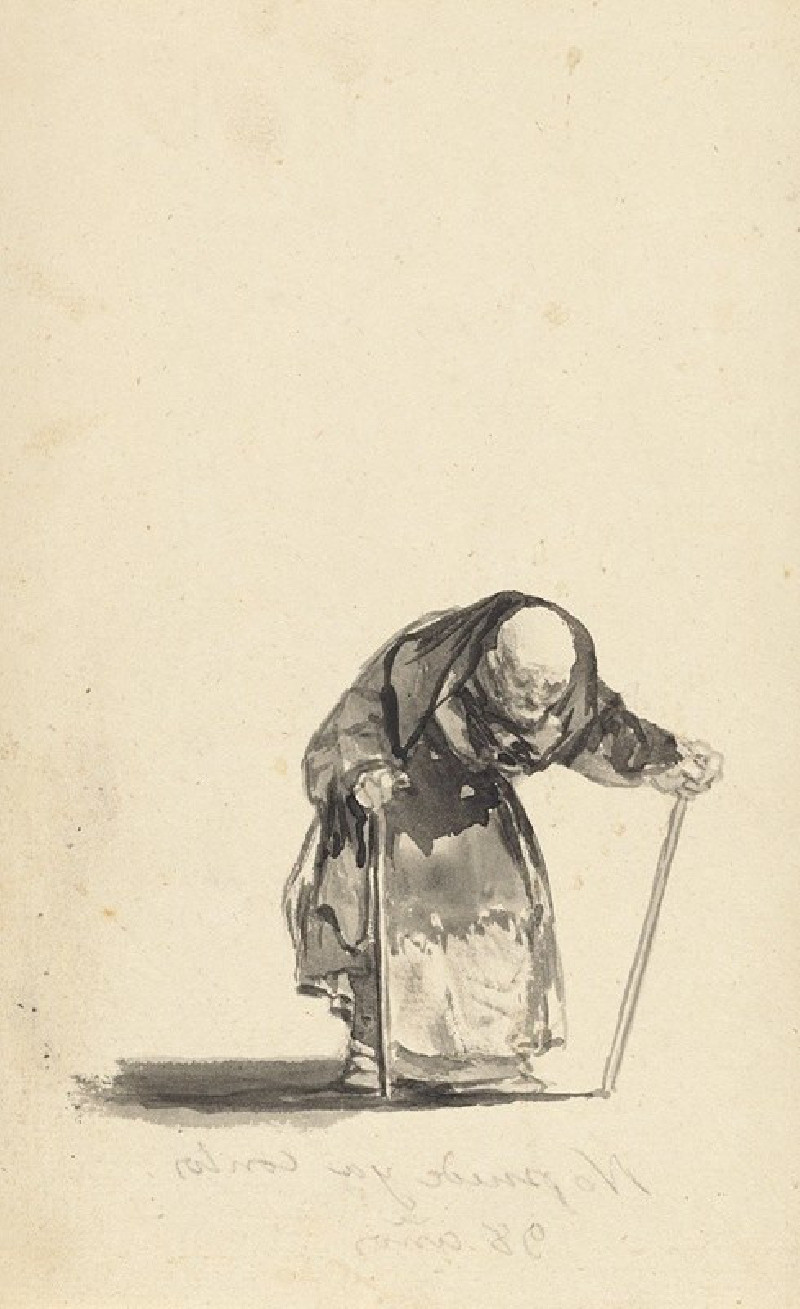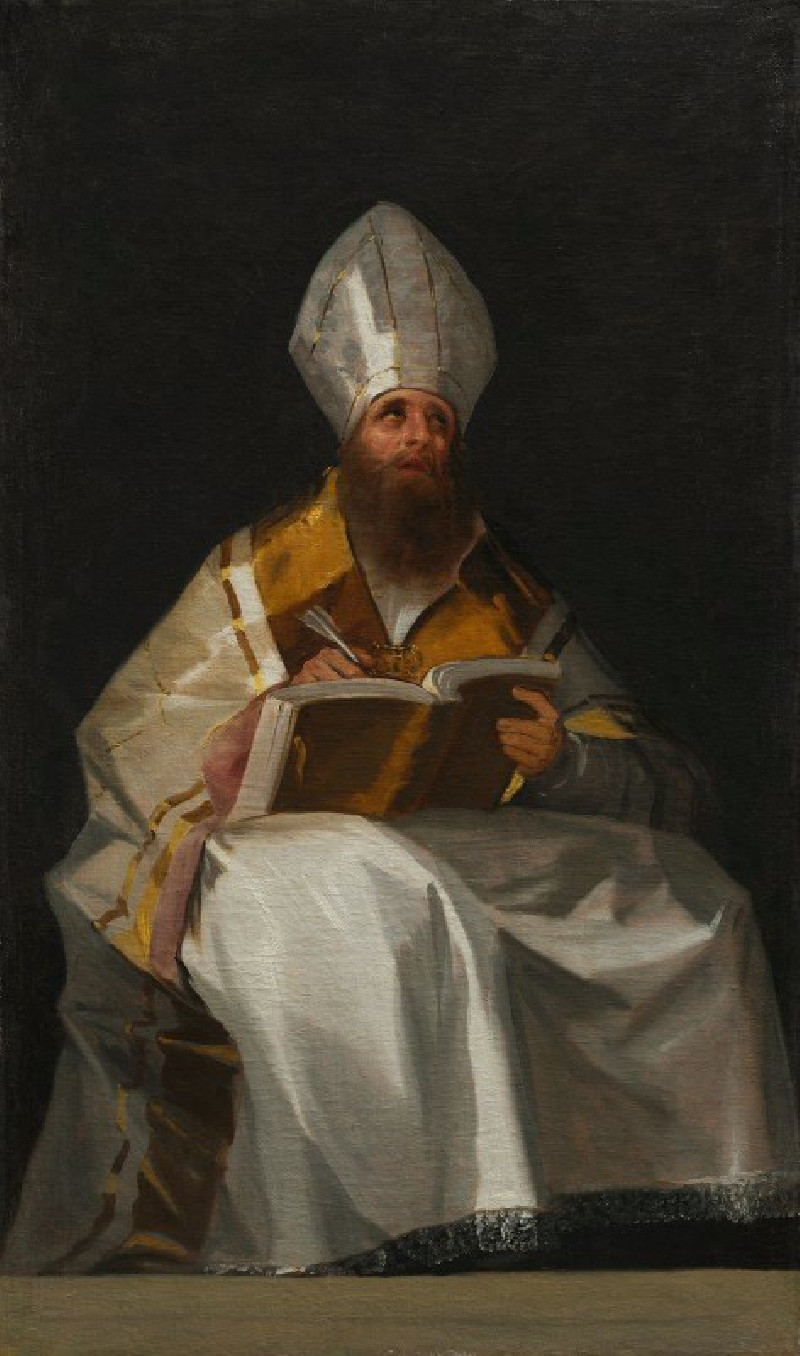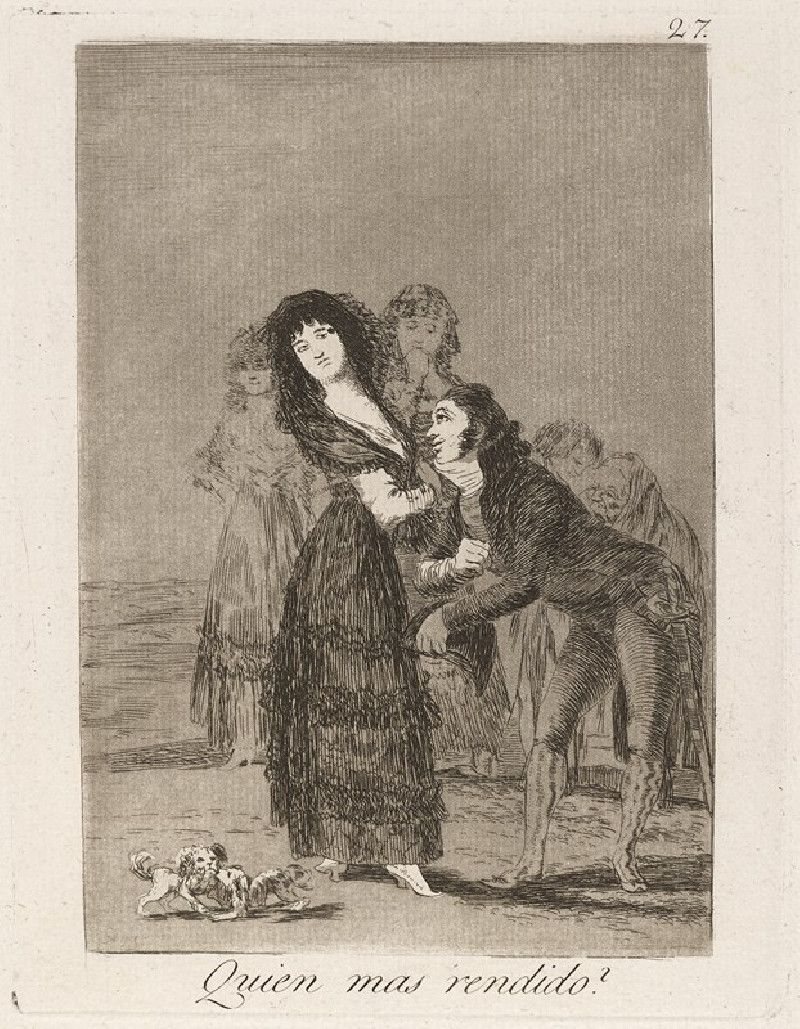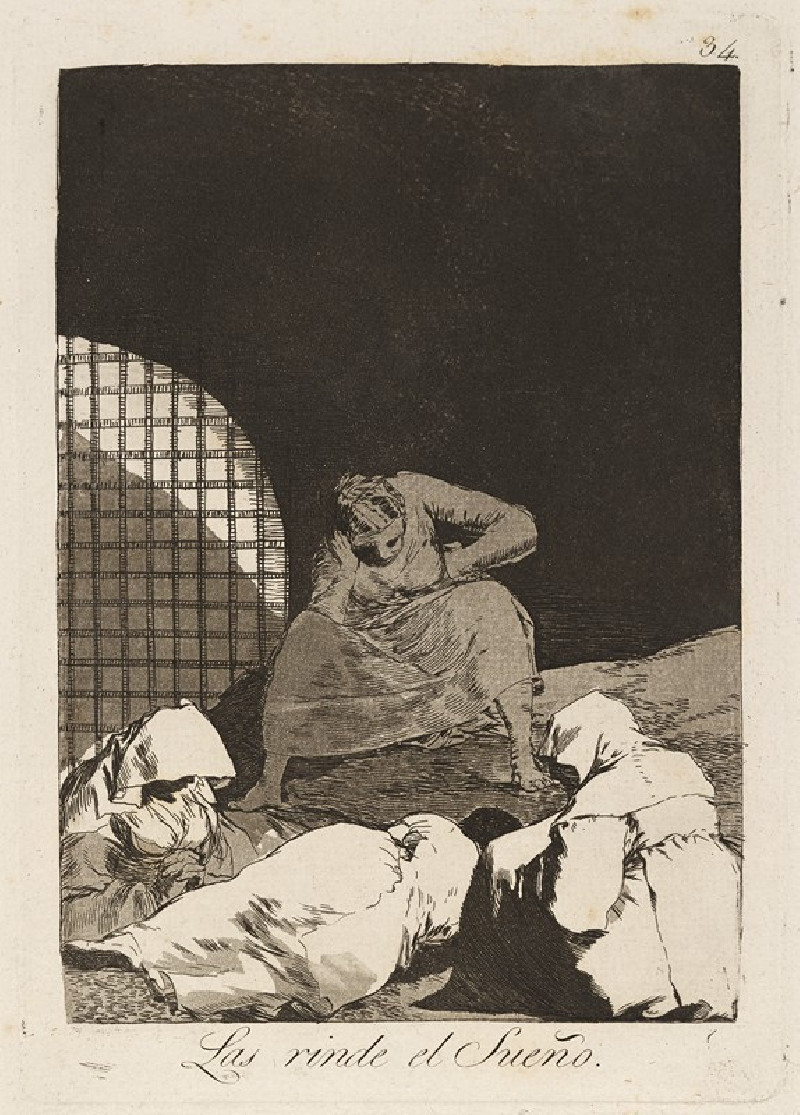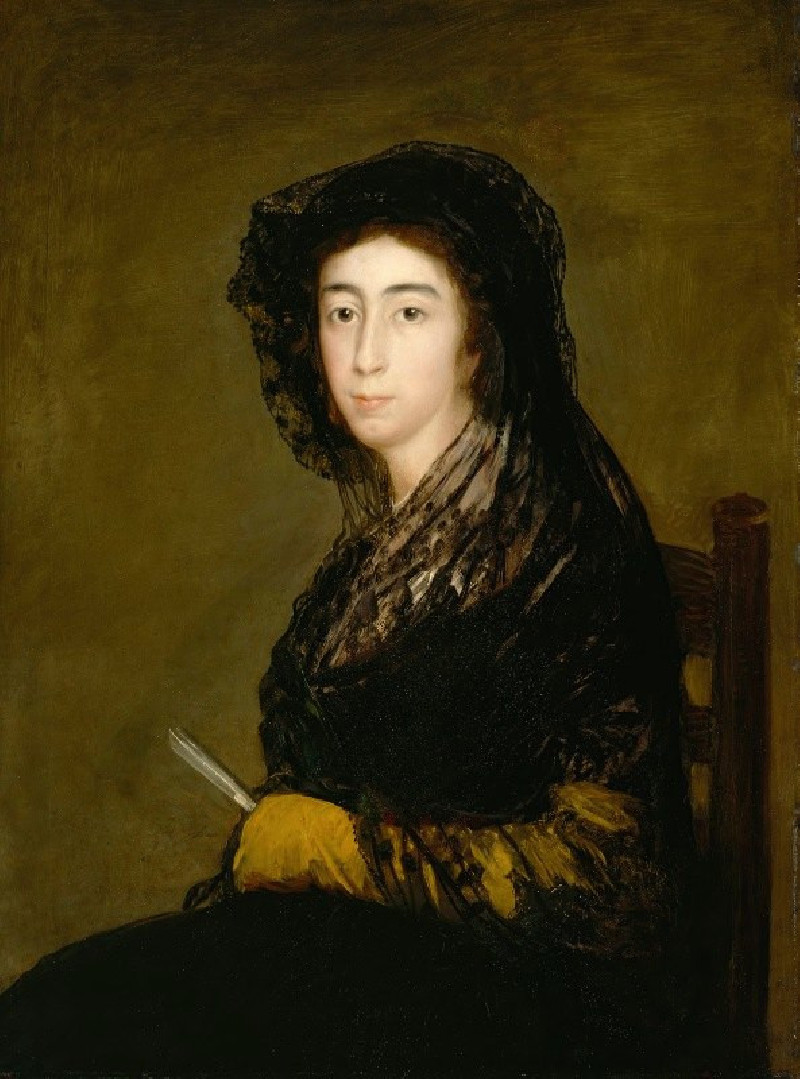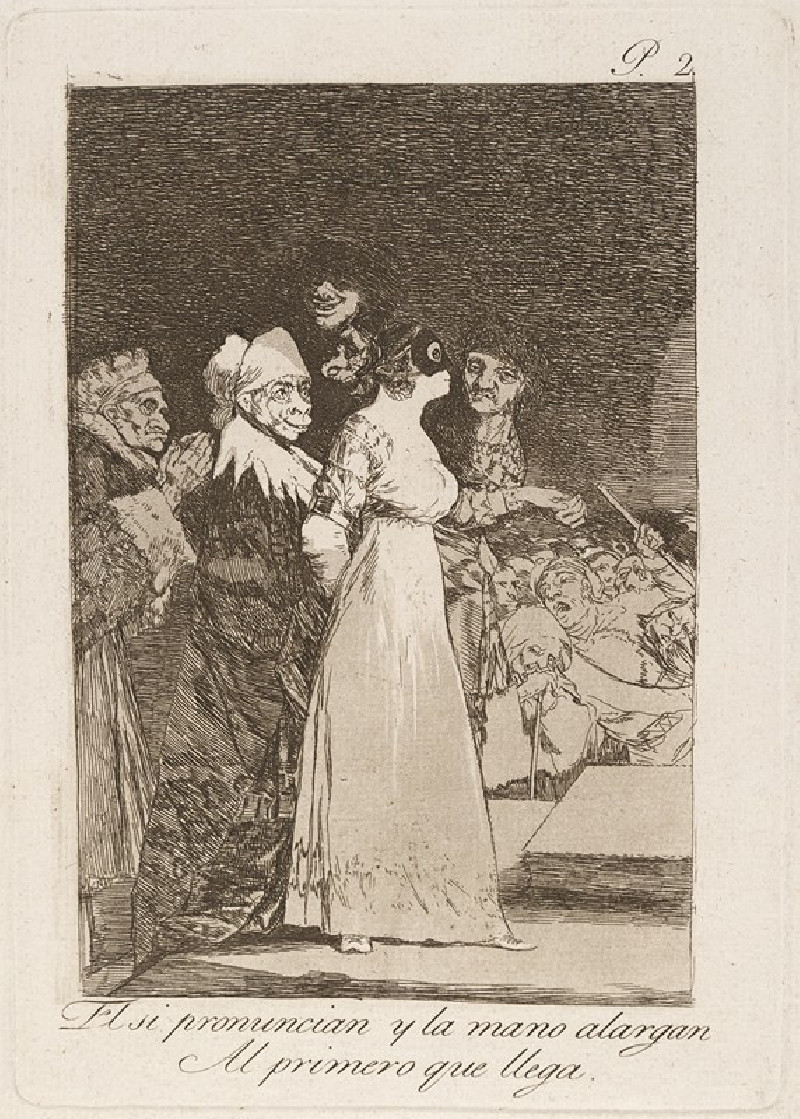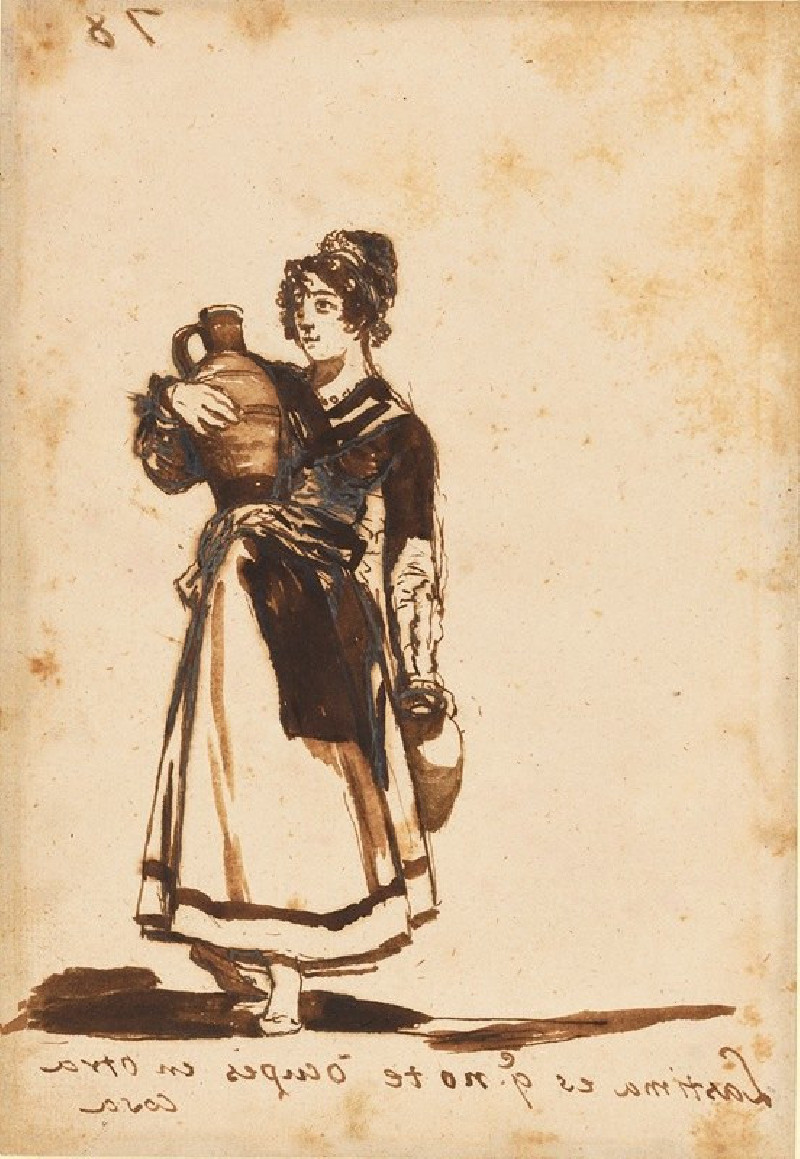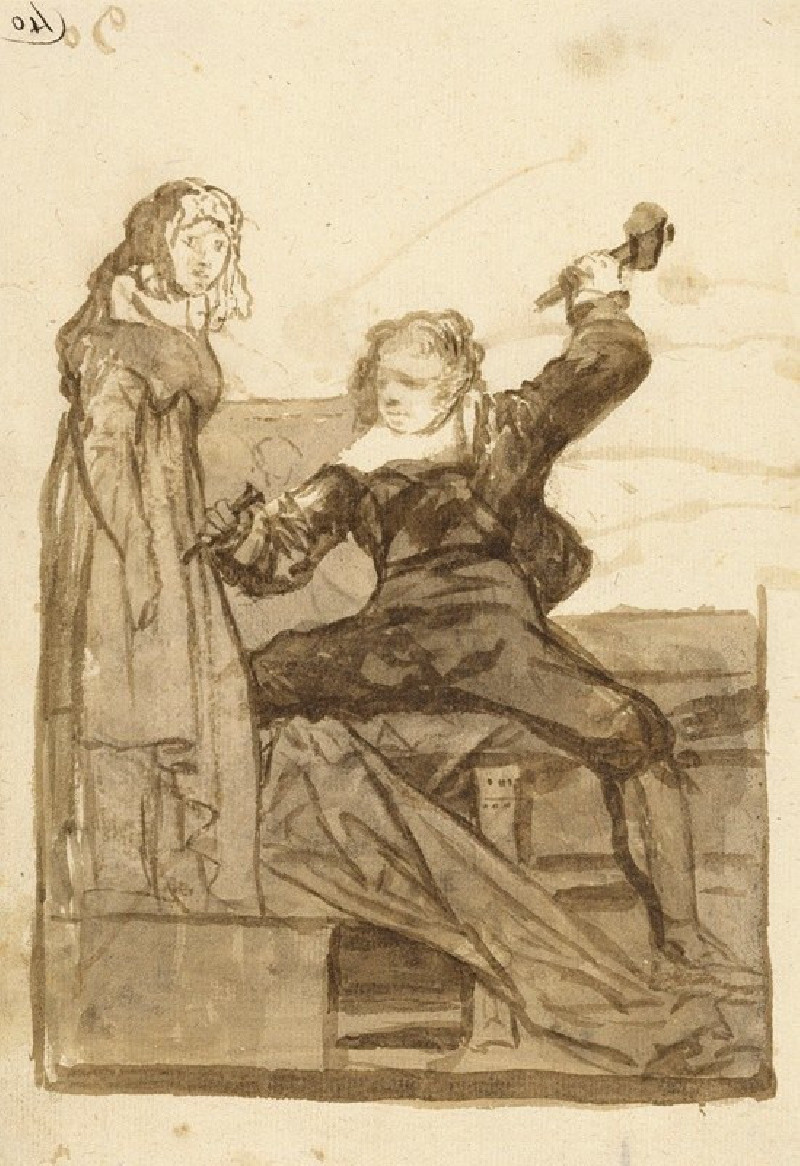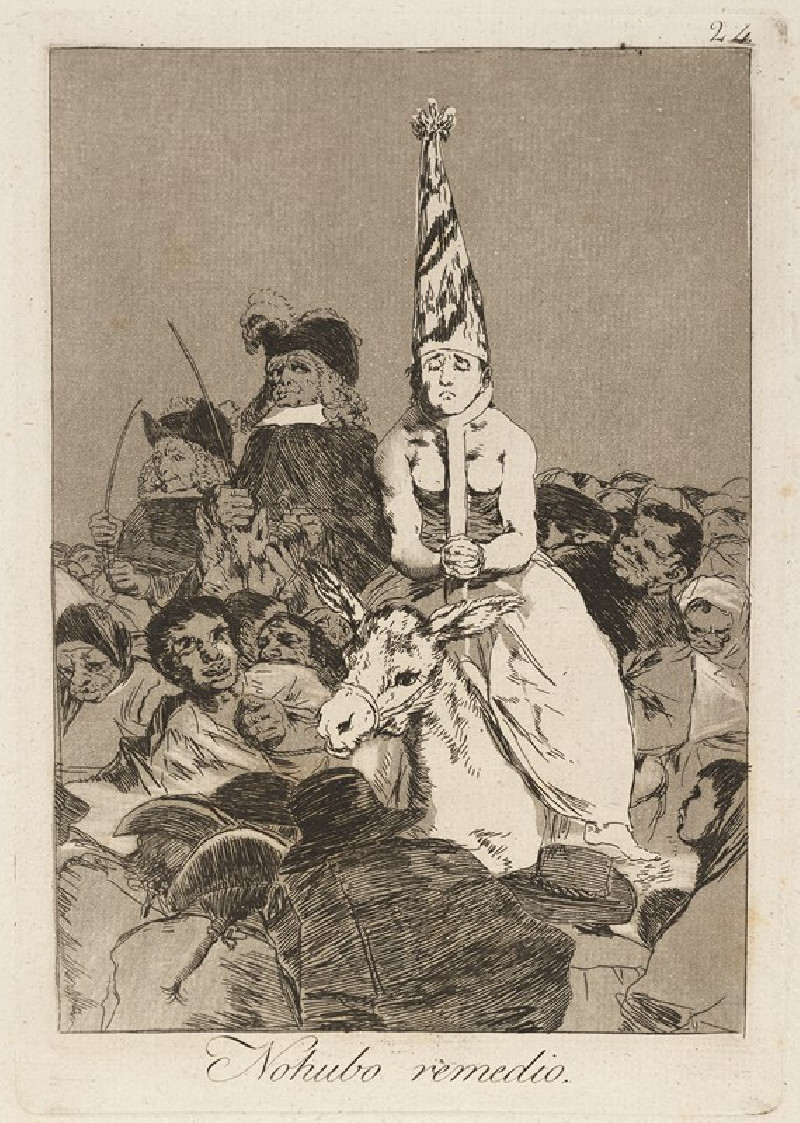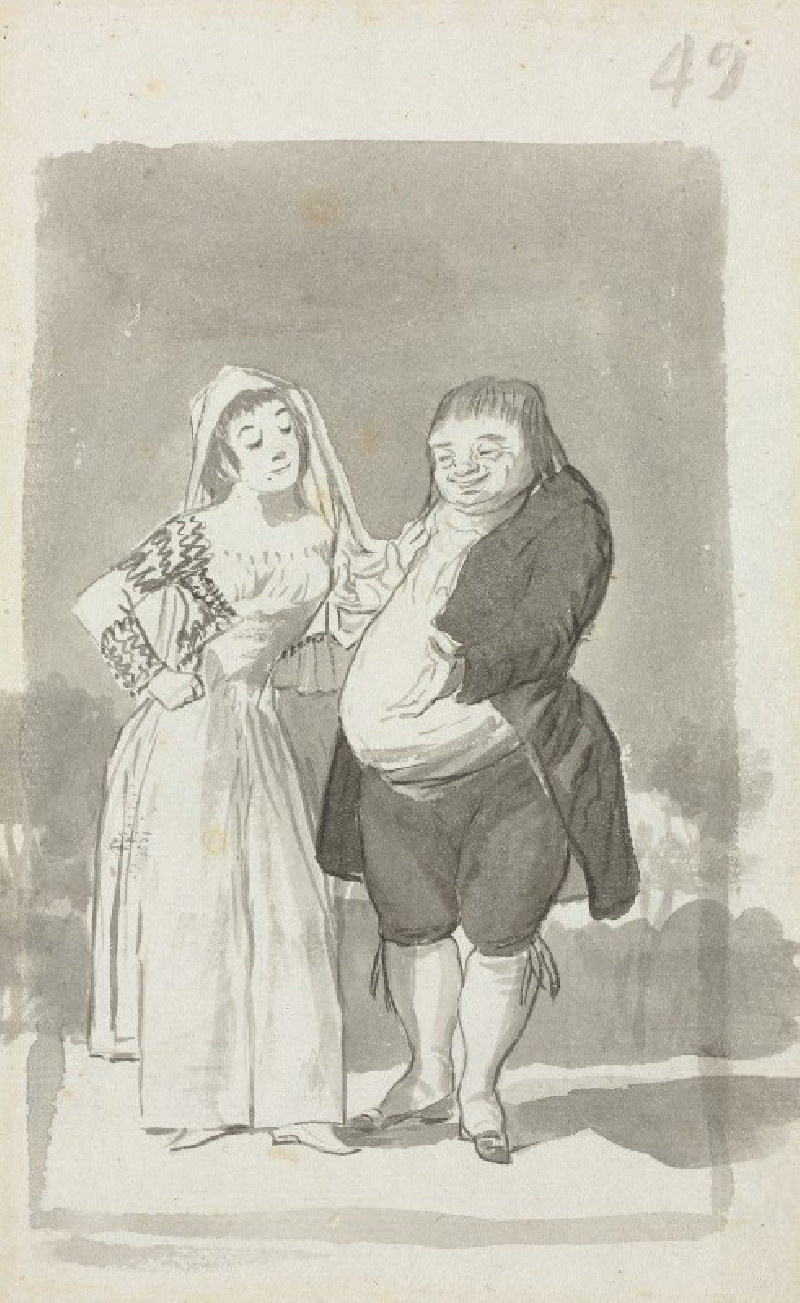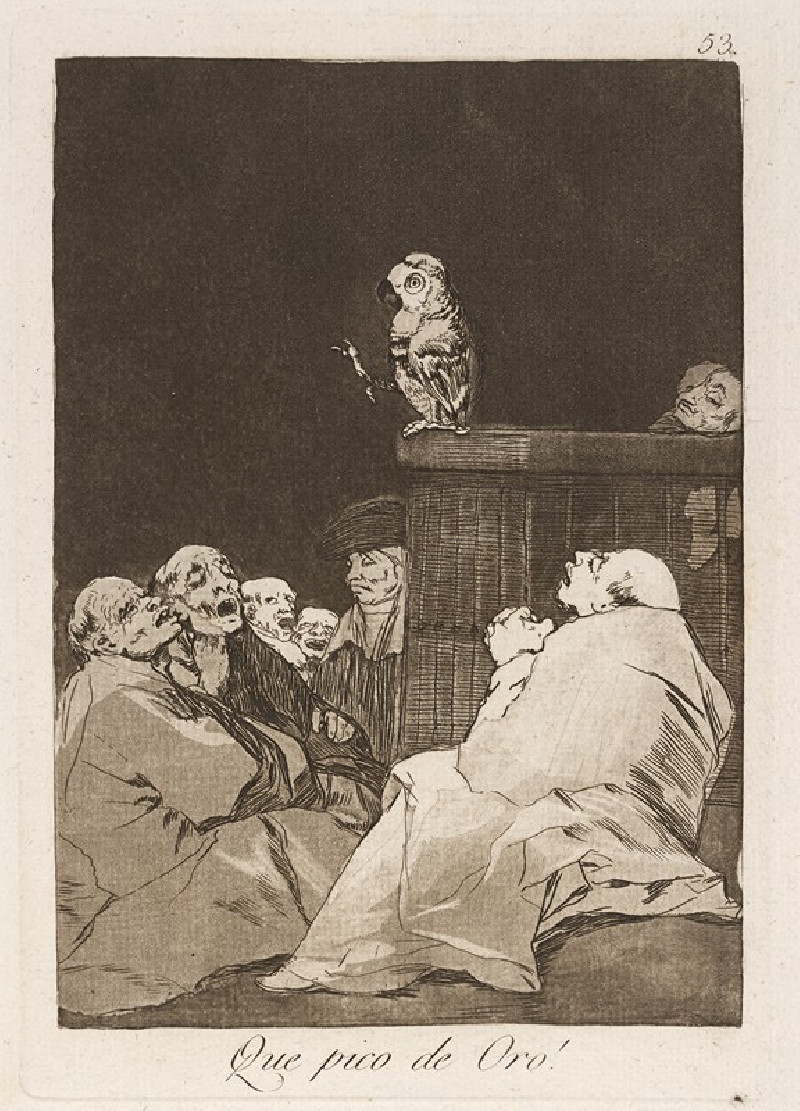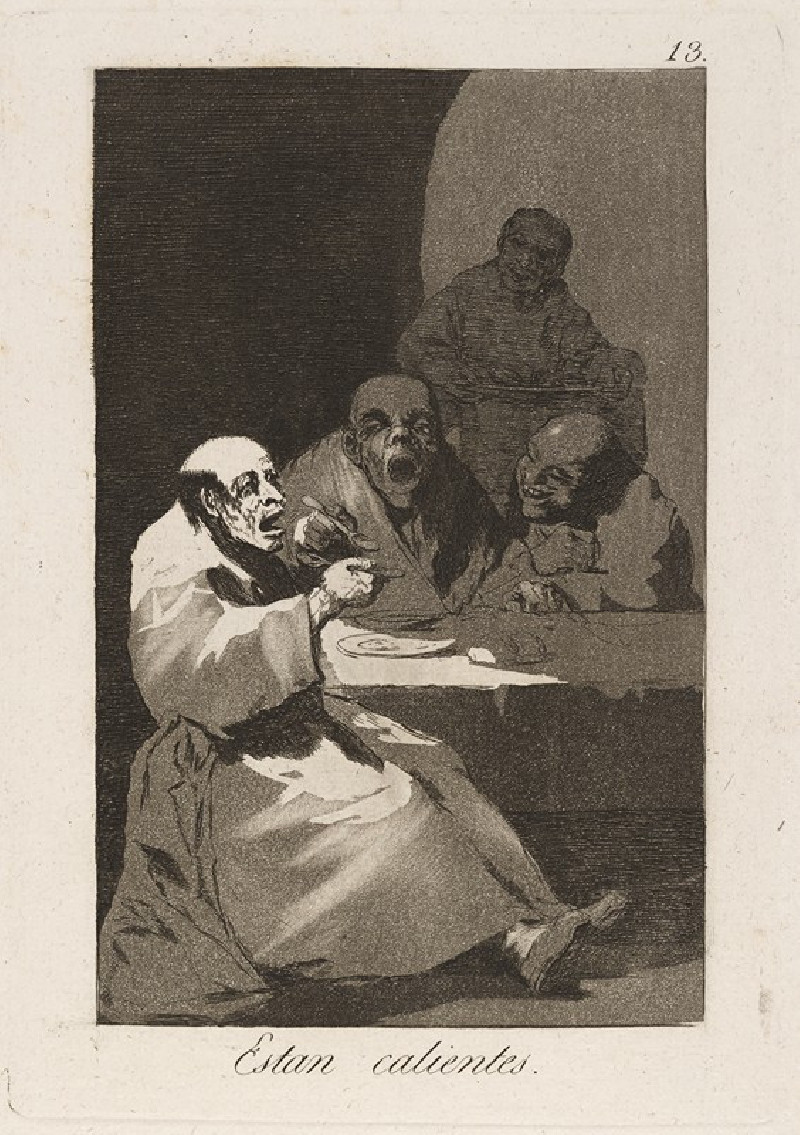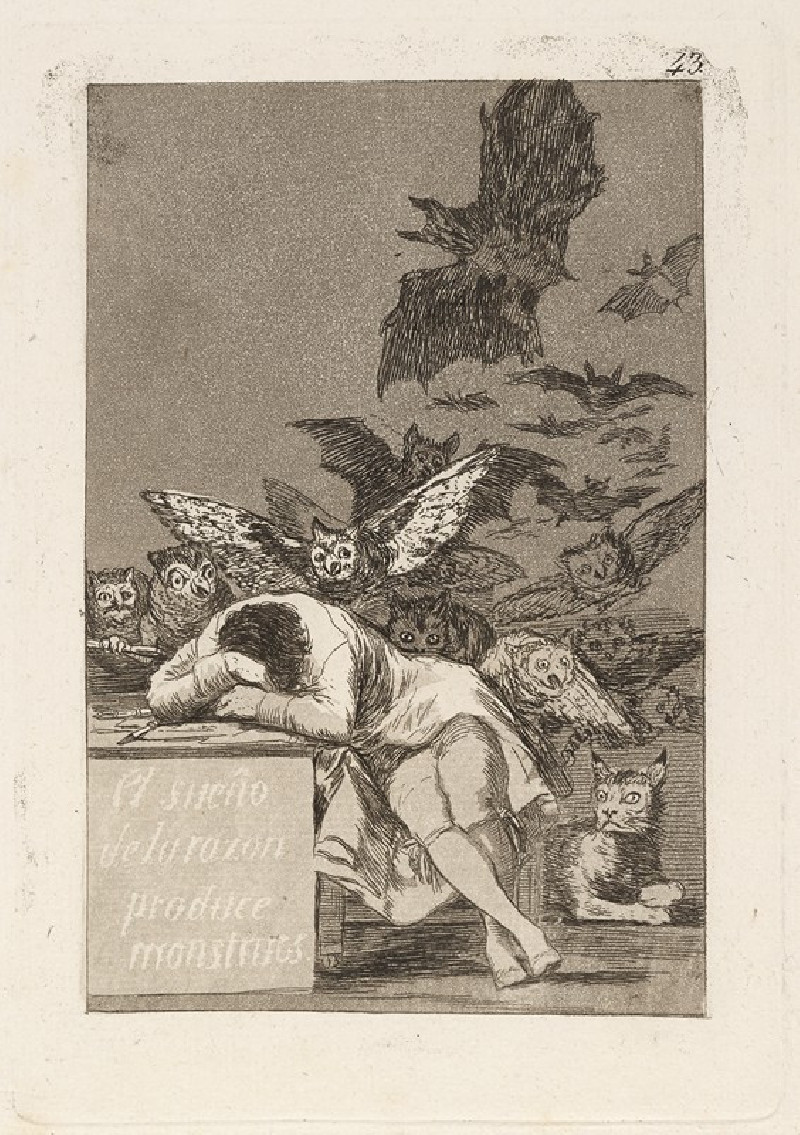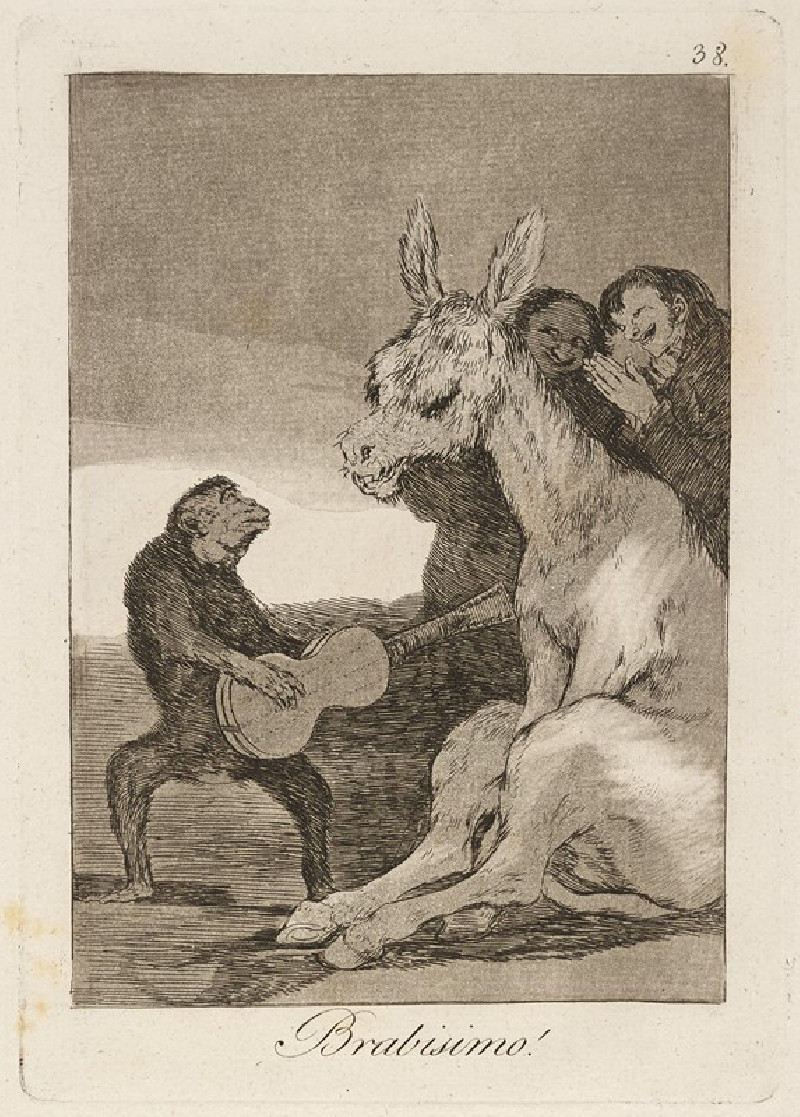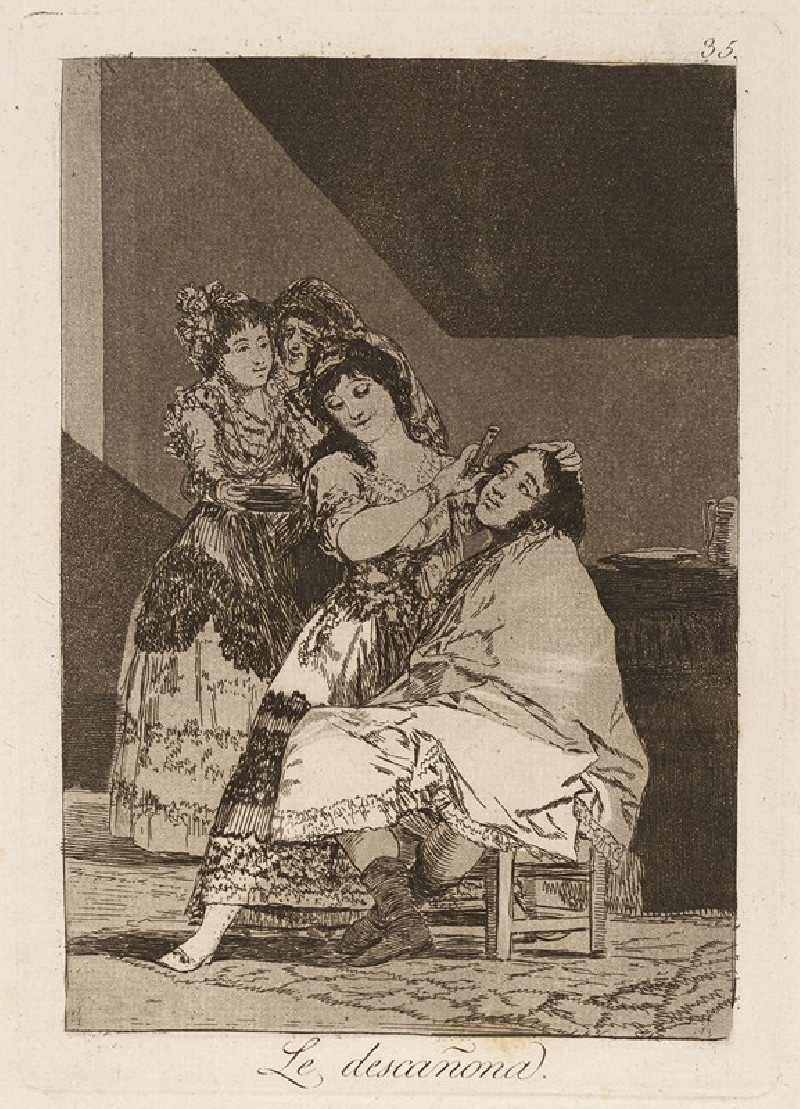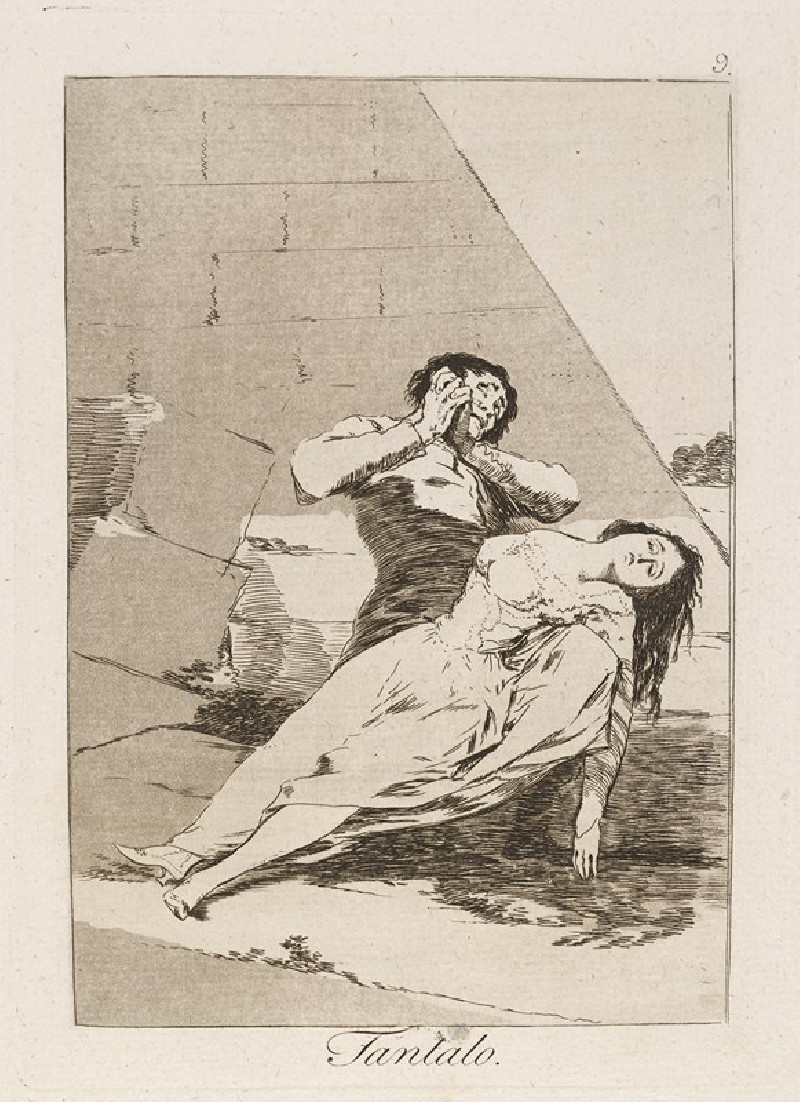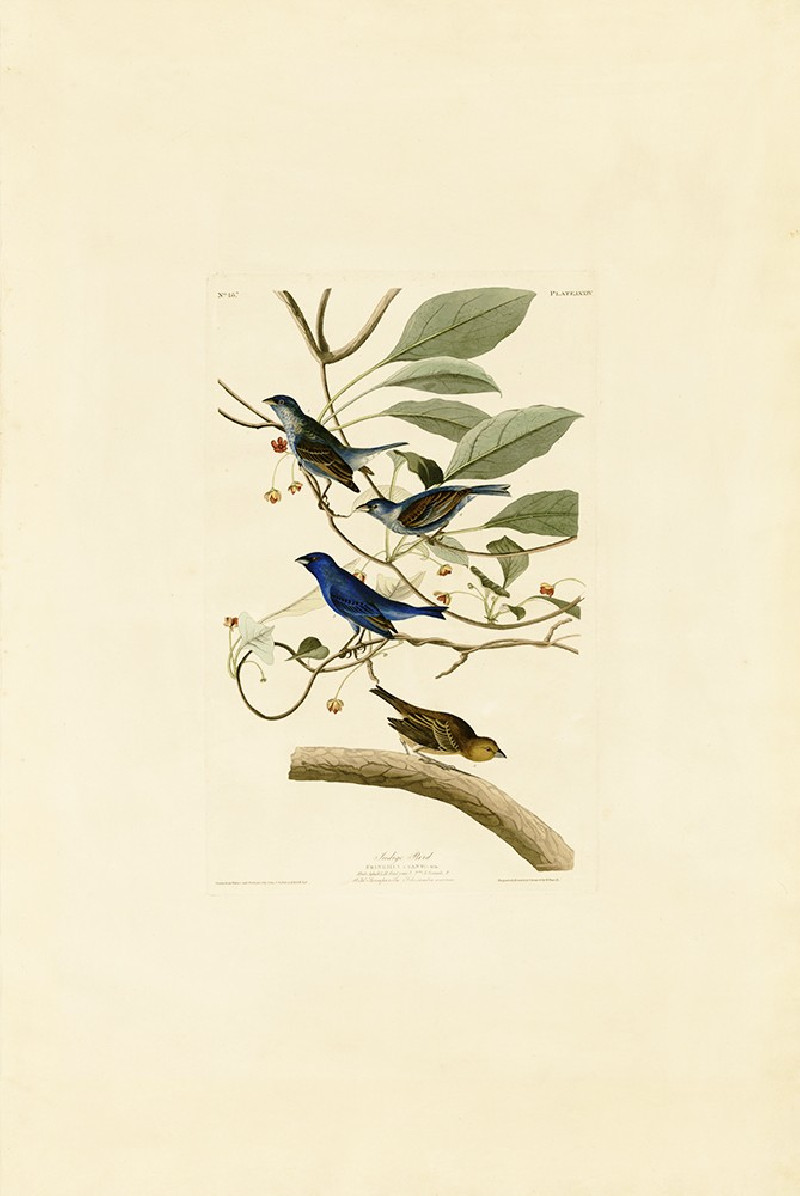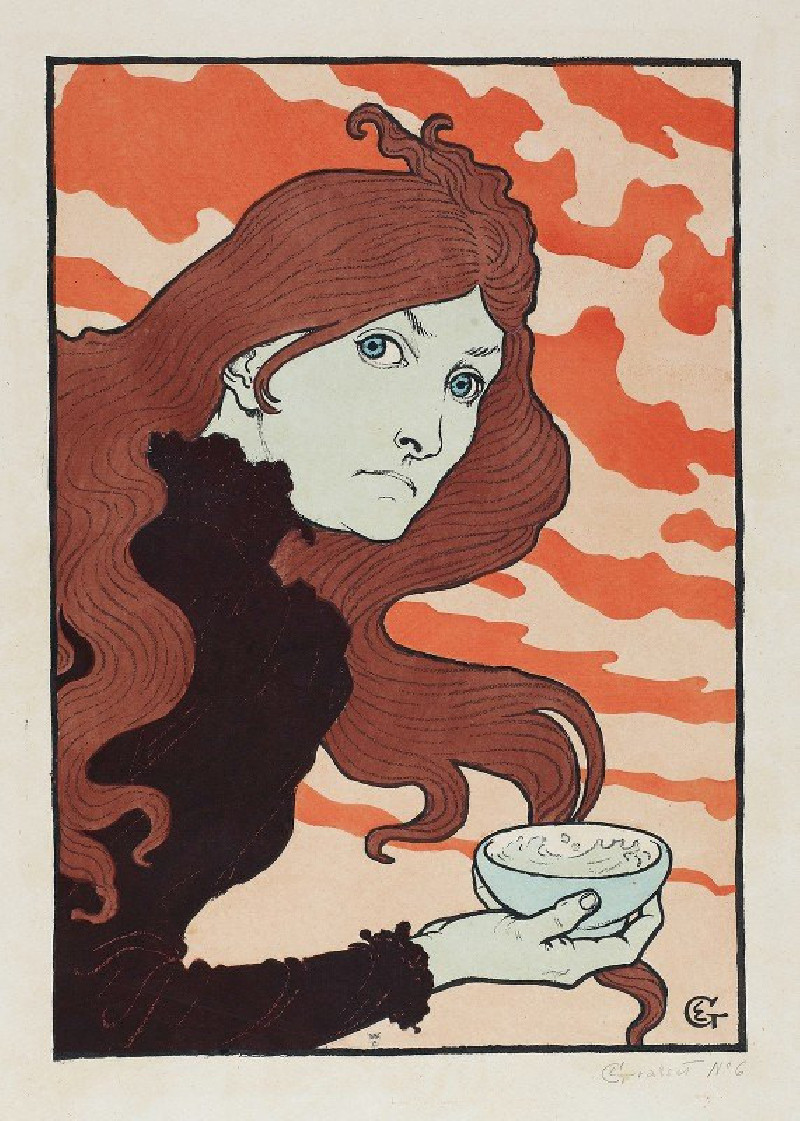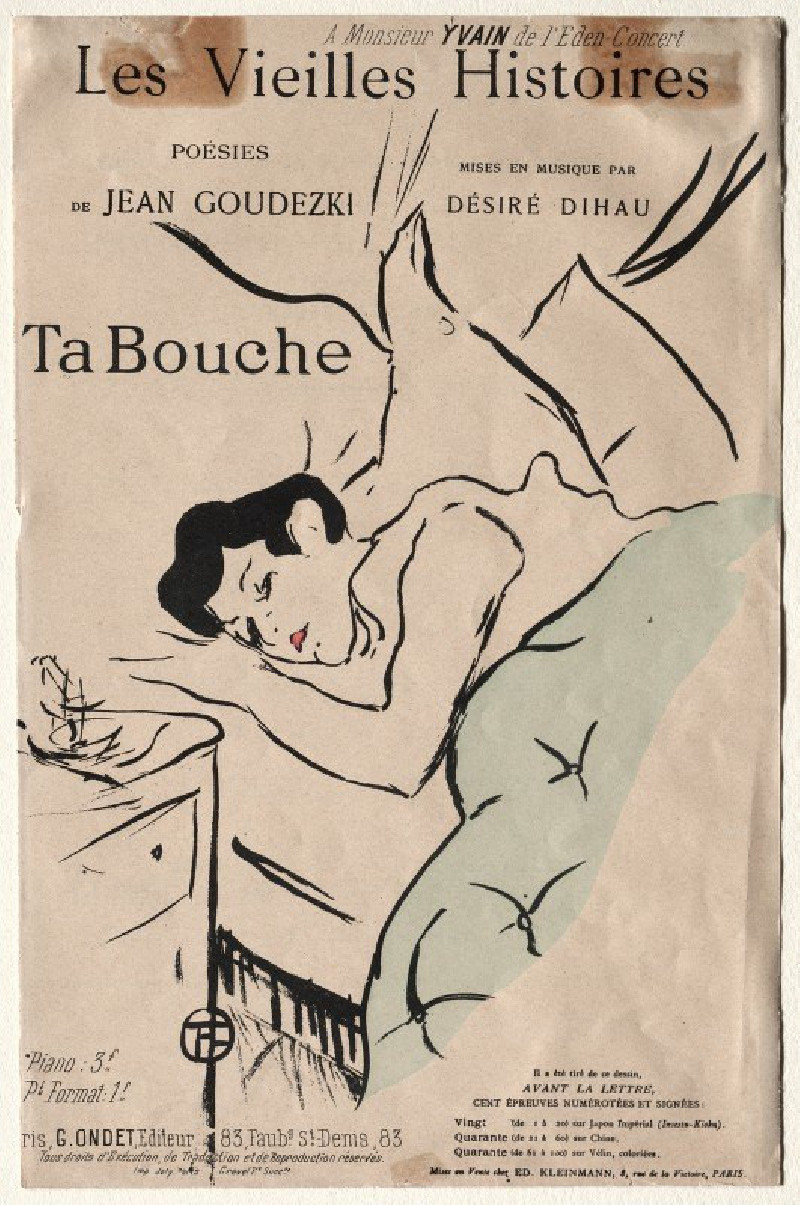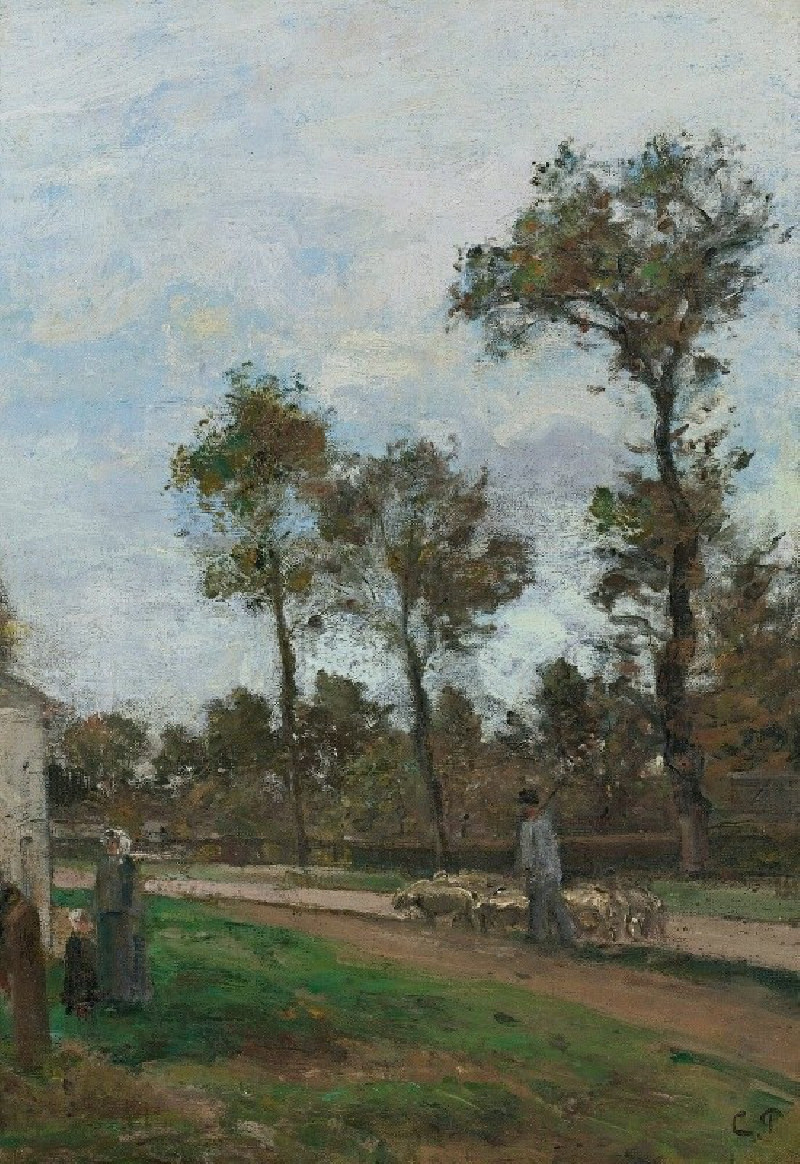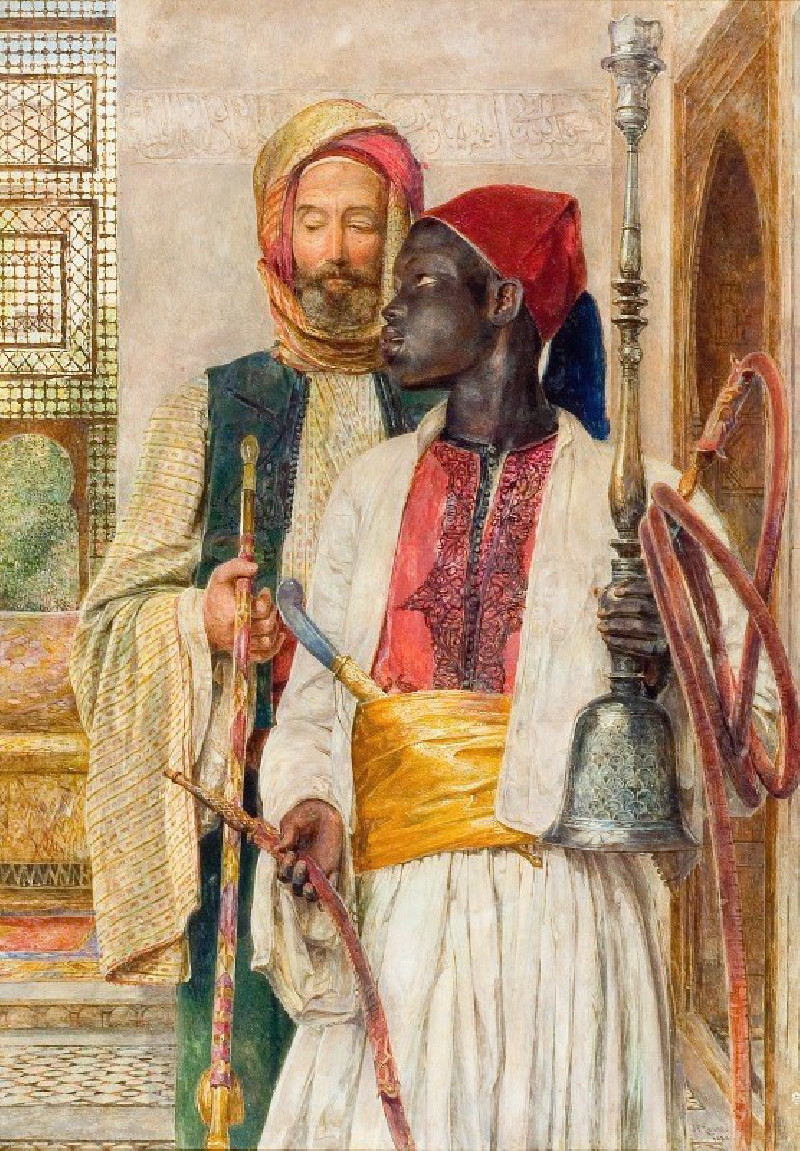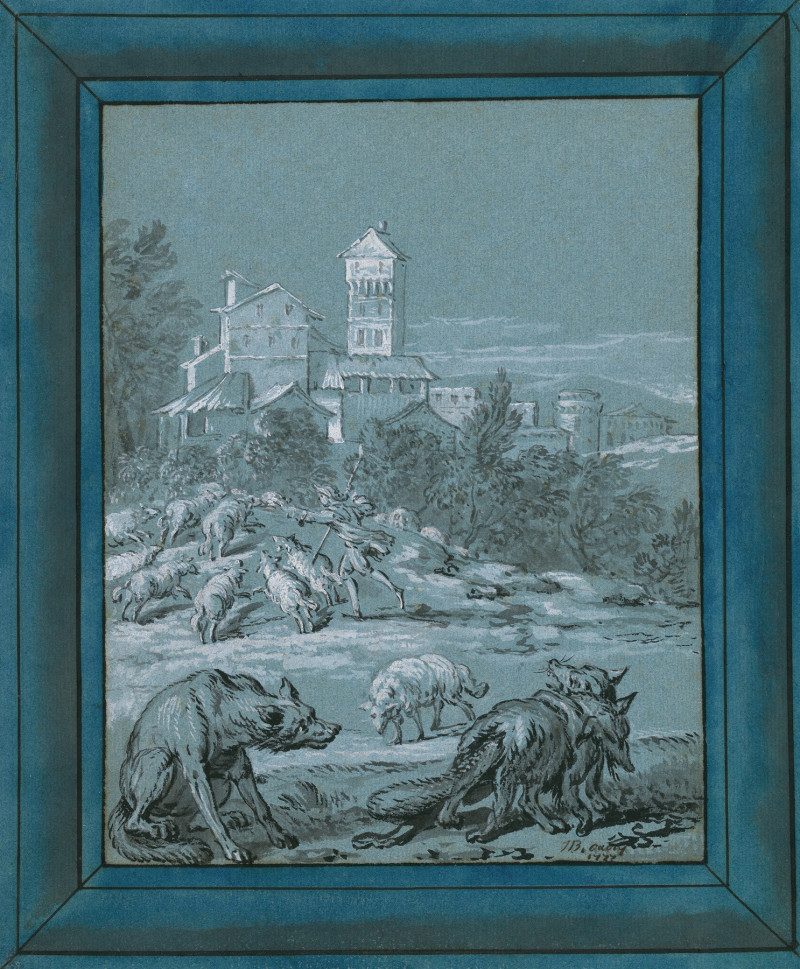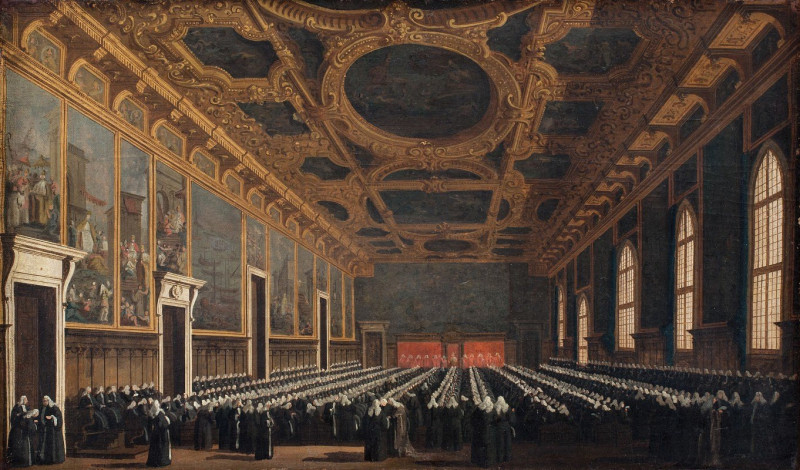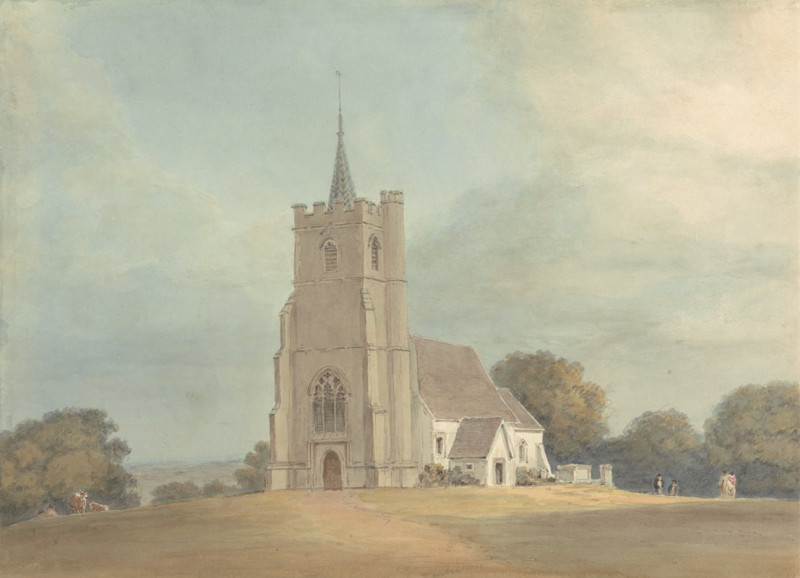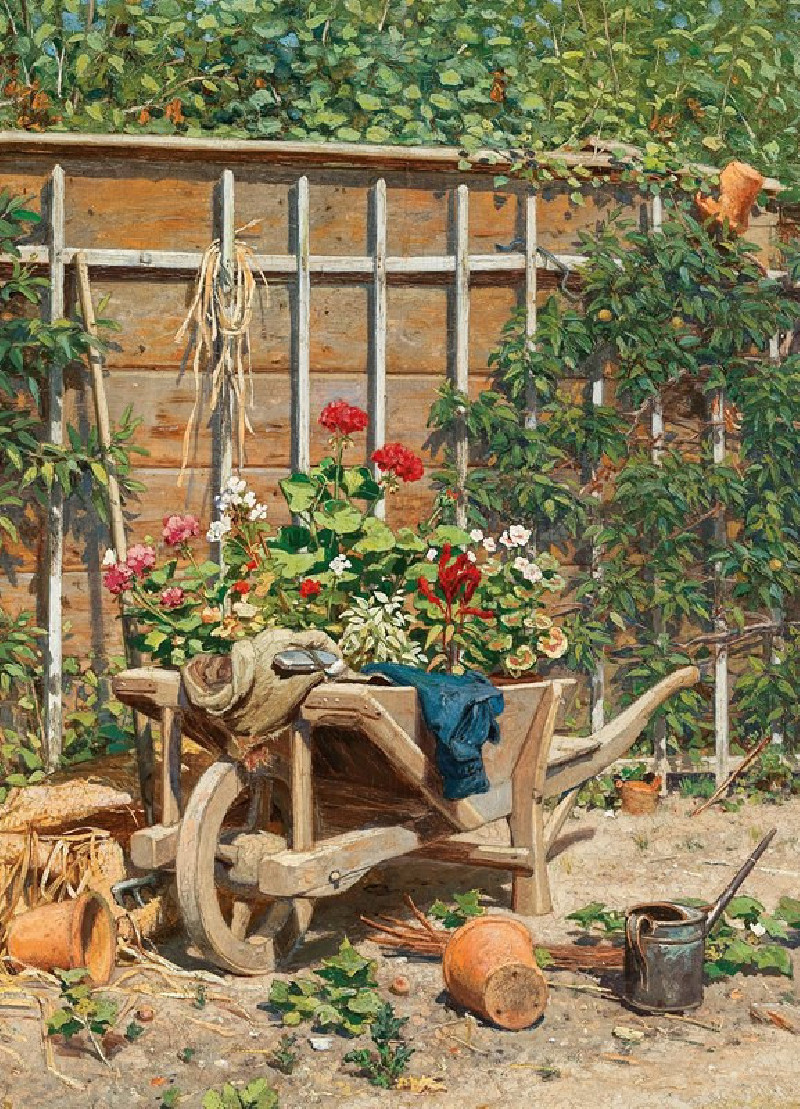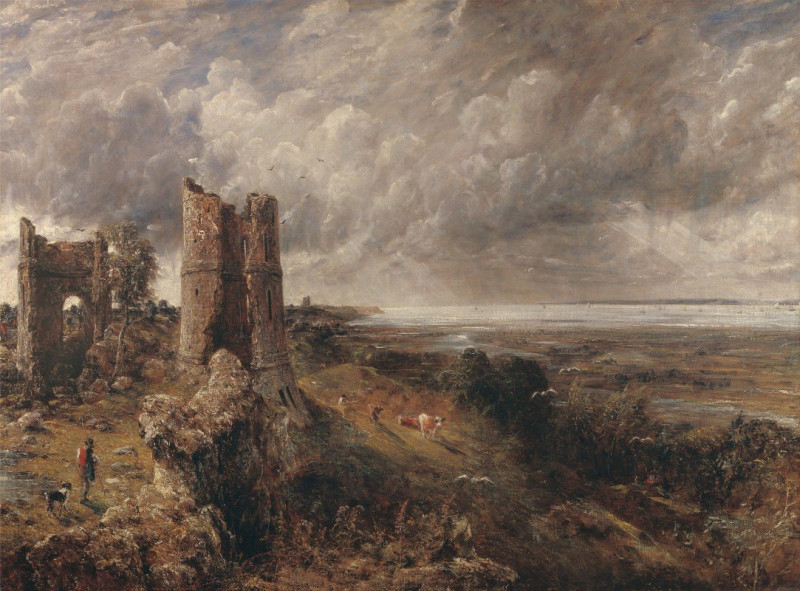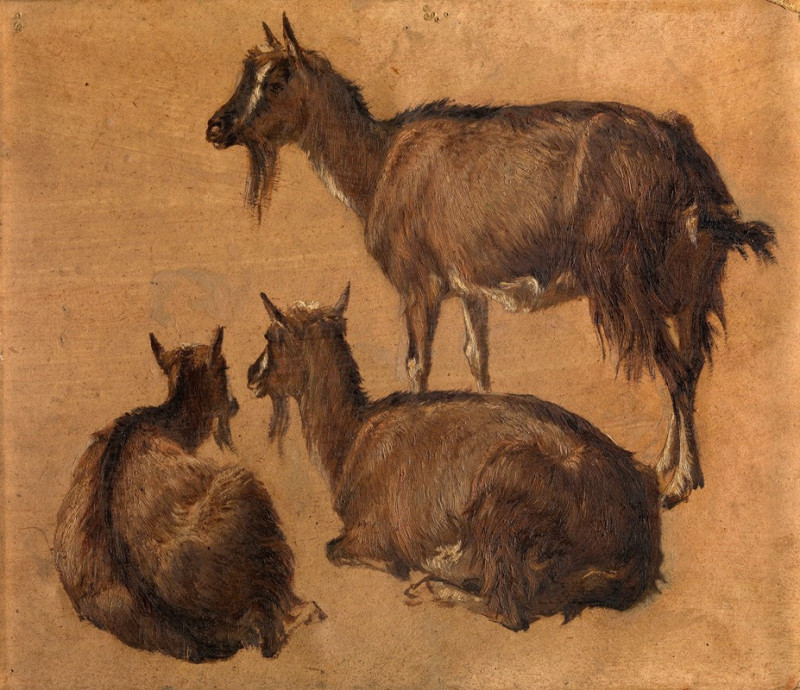Tu que no puedes. (Thou who canst not.) (1796-1797)
Technique: Giclée quality print
Recommended by our customers
More about this artwork
Francisco de Goya’s etching titled "Tu que no puedes" (Thou who canst not), created between 1796 and 1797, offers a compelling glimpse into the artist's critical perspective on society and human behavior. This piece forms part of Goya’s famed series, "Los Caprichos", which is celebrated for its intricate combination of satire and fantasy to critique the moral and social issues of his time.The scene depicted in "Tu que no puedes" is both dramatic and unsettling, presenting two donkeys, framed in an almost tender encounter, overshadowing two men. The composition inversely parodies social norms: the donkeys, typically symbols of stubbornness and foolishness, are placed dominantly above the men, suggesting a reversal of roles or an absurd elevation of what Goya viewed as the basest aspects of society. Such imagery is a stark commentary on the irrationality observed in human conduct, resembling animals in their most unthinking states.Beneath the physically and symbolically burdened men, both characters appear engaged in futile effort. This action could be interpreted as an allegory for the senselessness and burdens that societal expectations or self-imposed limitations can enforce on individuals. The etching’s title, "Thou who canst not", further amplifies the sense of desperation and incapacity that themes the artwork, posing reflection on personal and societal limitations.As with many works in "Los Caprichos", Goya uses a combination of realism and caricature, etched finely to bring out stark emotional responses. The use of shadows and the detailed rendering of figures intensify the gravity and satire that define this powerful piece.
Delivery
Returns
Francisco José de Goya y Lucientes (30 March 1746 – 16 April 1828) was a Spanish romantic painter and printmaker. He is considered the most important Spanish artist of the late 18th and early 19th centuries. His paintings, drawings, and engravings reflected contemporary historical upheavals and influenced important 19th- and 20th-century painters. Goya is often referred to as the last of the Old Masters and the first of the moderns.

